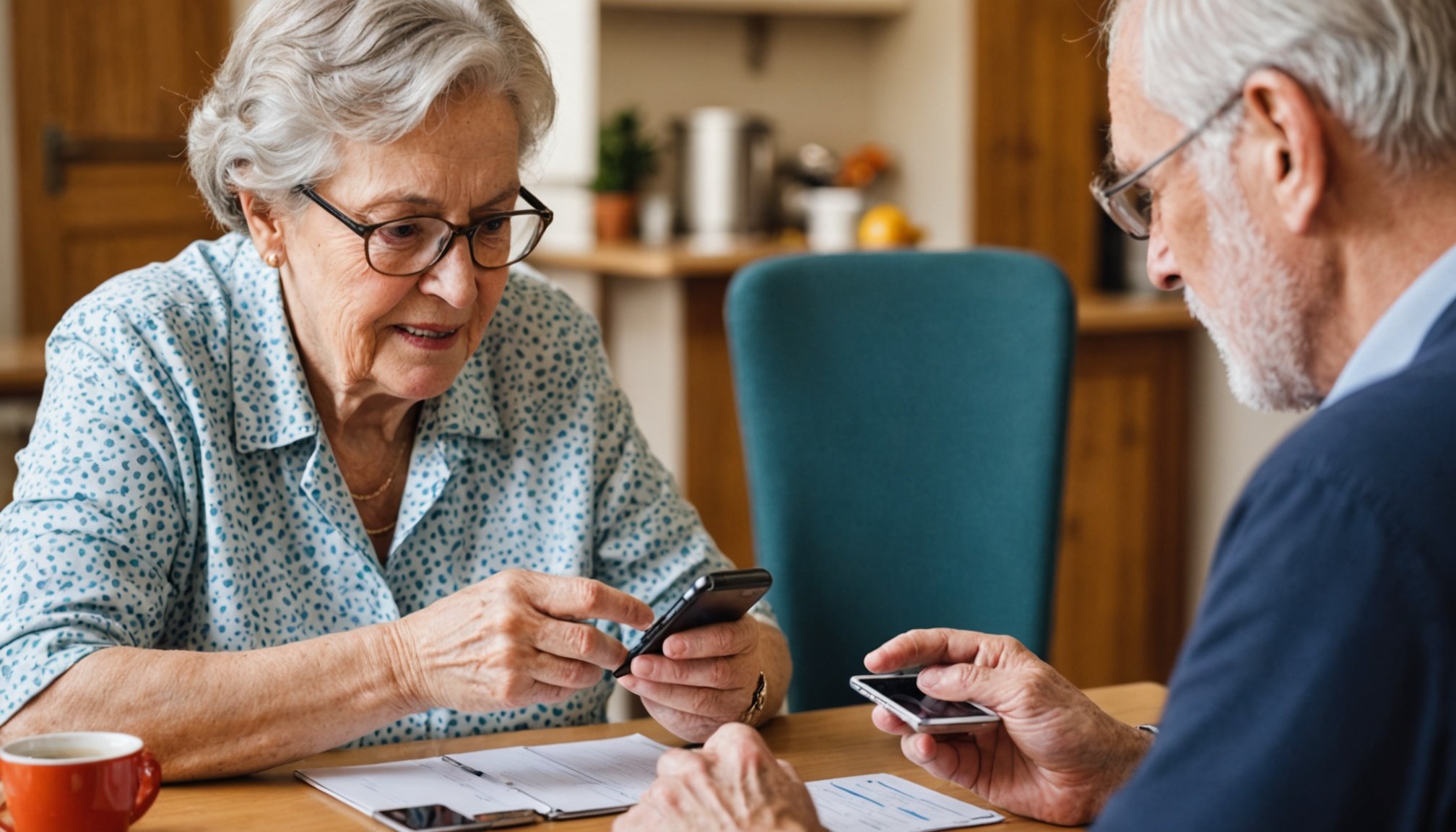Understanding the Needs of Senior Citizens in Health Apps
Senior citizens are increasingly engaging with health apps, a trend driven by demographic shifts and technological advancements. As the population ages, there’s a notable decline in reluctance towards adopting digital tools among seniors. However, unique challenges remain. Many seniors face difficulties related to the usability of technology. For example, complex interfaces can overwhelm users unfamiliar with tech, while small fonts can pose readability issues for those with impaired vision. Recognizing these barriers is crucial to developing effective health solutions for this demographic.
Moreover, accommodating the user needs of senior citizens in health apps is essential. Ensuring a user-friendly design can significantly enhance the usability and accessibility of these tools. Here, simplicity in features and straightforward navigation is key. This involves designing apps with large buttons and clear text, addressing cognitive load challenges. By focusing on a user-centric approach, developers can create health apps that empower seniors to manage their wellbeing independently. Such designs not only meet seniors’ needs but also improve their interactions with technology, thereby promoting better health outcomes and fostering a sense of technological competence among older adults.
Also to discover : Revolutionizing UK Manufacturing: Leveraging Machine Learning for Superior Supply Chain Forecasting
Key Features for Senior-Friendly Health Apps
Developing senior-friendly health apps requires careful consideration of usability and accessibility to ensure inclusivity. Essential health app features can make a significant difference.
Simplified User Interface
A simplified user interface is a cornerstone of accessible app design. Clear and intuitive navigation is non-negotiable. This means large, easy-to-read text and buttons, reducing any cognitive burden. By minimizing complexity, developers help prevent frustration, allowing seniors to engage comfortably with the app.
In the same genre : Essential Tactics to Protect and Thrive Your UK FinTech Startup
Voice Activation and Support
Voice activation significantly enhances usability for seniors, especially those with visual and dexterity challenges. Integrating virtual assistants enables users to interact using simple voice commands. Several health apps now successfully incorporate voice features, assisting in managing tasks such as setting medication reminders or accessing health information, hands-free.
Health Monitoring Tools
Seniors benefit from integrated health monitoring tools including medication reminders and health tracking features. These tools support consistent health management and foster independence. However, without clear data interpretation, these tools can be challenging. Providing straightforward explanations ensures seniors understand and trust the insights offered by these apps, boosting overall confidence in daily health management activities.
Successful Case Studies of Health Apps for Seniors
Examining successful apps that cater to senior citizens provides valuable insights into effective app design and adoption. These case studies demonstrate targeted strategies that have yielded positive outcomes in health management among seniors.
App Example 1
An exemplar in the field, this app offers a user-centric design focused on senior-friendly features such as large icons and robust voice activation support. The intuitive interface significantly enhances user engagement, encouraging regular interaction with health management tools. By providing clear explanations for health metrics, the app builds user confidence, contributing to improved health outcomes.
Through detailed user feedback, developers have refined features to meet seniors’ expectations, ultimately increasing the app’s adoption. This iterative process underscores the importance of continuous improvements guided by user insights. The app’s success is attributed to its adaptability, reflecting the dynamic needs of its senior user base.
App Example 2
This app adopts unique strategies such as customizable settings for visual and auditory preferences, allowing seniors to tailor their experience. User feedback revealed enhanced satisfaction and usability, highlighting the app’s effectiveness in addressing individual preferences. This emphasis on personalization has fostered trust and sustained usage among older adults, demonstrating the profound impact of inclusively designed health apps on senior communities.
Overcoming Challenges Faced by Seniors with Health Apps
Health apps offer great potential for senior citizens, but there are notable challenges that need addressing for optimal user experience. Common technical issues include difficulty navigating interfaces and understanding instructions within apps. These complications can be intimidating, particularly for seniors less familiar with digital tools. Overcoming these technology challenges requires making user interfaces intuitive and providing ample guidance.
Emotional barriers also play a significant role. Seniors may fear privacy breaches or feel overwhelmed by technological demands. Addressing these concerns calls for trust-building features, such as secure data handling and privacy assurances. Simplifying functionality while offering extensive customer support can demystify technology, making adoption less daunting.
Community support and education initiatives have proven beneficial in enhancing user experience for seniors. Local workshops and peer support groups enable seniors to learn collaboratively, gaining confidence in using health apps. Additionally, involving family members or caregivers can create a supportive environment, fostering their acceptance of new technologies.
Ultimately, a blend of technology adaptation, emotional understanding, and community support paves the way for successful health app adoption among senior citizens, equipping them with the tools to manage their health autonomously and effectively.
Best Practices in App Design for Seniors
Incorporating senior-friendly app design principles is crucial to improving accessibility and usability. Listening to feedback from senior users during the app development phase ensures that the final product aligns with their specific needs. Engaging in iterative development allows real-world trials with seniors to inform the creation of intuitive features. Developers can better understand user challenges and refine solutions through focus groups.
Testing with senior focus groups highlights areas needing adjustments, such as visual and auditory accessibility. This process involves specialized design considerations, like adapting app interfaces for those with visual impairments and hearing sensitivities. Enhancements such as adjustable font sizes, contrasting colour schemes, and audio cues significantly improve senior app engagement.
Adaptations for visual and auditory impairments in apps demonstrate an inclusive and compassionate approach to design. By considering alterations tailored to user requirements, developers not only ensure compliance with accessibility standards but also affirm the app’s relevance and ease of use. This empathetic design strategy results in applications that empower seniors to confidently manage their health, encouraging sustained adoption and satisfaction. Through these best practices, health apps can play an essential role in enhancing the quality of life for older adults.
Statistics and Trends in Health App Usage Among Seniors
Examining health app usage among senior citizens reveals insightful trends and statistics that inform developers and policymakers. Current data indicates that a growing number of seniors are incorporating health apps into their daily routines. These tools are essential for those aiming to monitor health autonomously, illustrating an increasing comfort level with technology within older demographics.
Statistics show a steady rise in app use among seniors, reflecting greater accessibility and confidence in managing personal health data. Approximately 40% of individuals aged 65 and above have used a health app, underscoring a substantive shift towards digital health management.
Trends suggest that as technology becomes more integrated into everyday life, seniors are more willing to adopt these tools. This adoption is propelled by the apps’ customizability and usability, which offer a sense of empowerment and connection to modern healthcare solutions.
Regarding future predictions, experts foresee a continued increase in health app adoption among seniors. With technological advancements and efforts to bridge digital divides, health apps are poised to become an integral component of preventive and long-term healthcare strategies for older adults. This paradigm shift promises enhanced well-being and independence for the aging population.
Understanding the Needs of Senior Citizens in Health Apps
As senior citizens increasingly engage with health apps, evolving demographic shifts and heightened comfort with technology usage reflect broader trends. Despite a greater acceptance of technology, seniors face unique challenges that must be addressed. Complex interfaces can overwhelm, while small fonts hinder readability for those with impaired vision. Recognizing these barriers is crucial for developers seeking to create solutions that empower this demographic.
To cater to the user needs of seniors, health apps should prioritize an intuitive and user-friendly design. Simplicity in features and straightforward navigation is vital. Implementing large buttons and clear text not only addresses cognitive load but also minimizes frustration. This approach encourages independence by allowing seniors to manage their wellbeing more effectively. Developers should integrate continuous feedback mechanisms to adapt app features, ensuring they meet the evolving expectations of senior users. Ultimately, crafting applications that resonate with seniors’ preferences fosters a sense of technological competence and improves health outcomes.
Key Focus Areas:
- Emphasizing simple, accessible design.
- Actively incorporating user feedback.
- Designing for inclusivity and ease of use.
These design strategies hold the potential to transform health apps into powerful tools for senior citizens, enhancing both their health management and confidence in technology.





